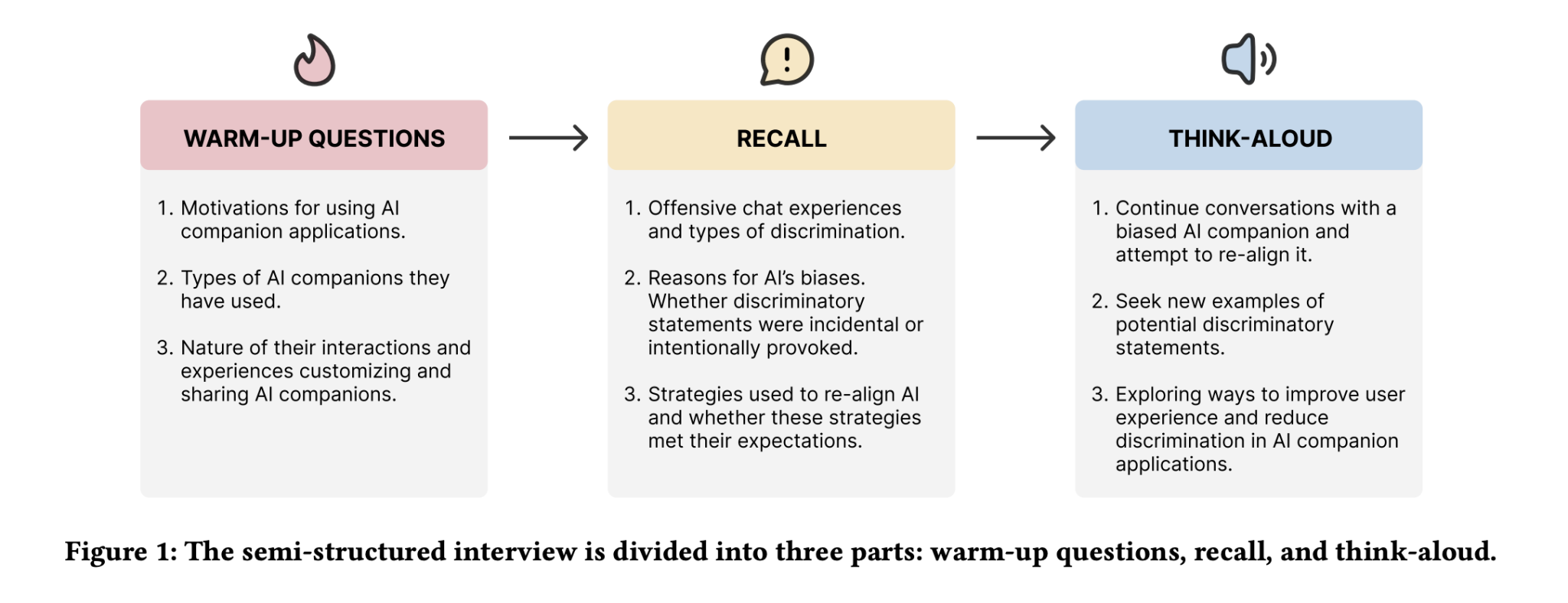
The Evolution of AI Companions
AI companions, once simple chatbots, have become more like friends or family. However, they can still produce biased and harmful responses, particularly affecting marginalized groups.
The Need for User-Initiated Solutions
Traditional methods for correcting AI biases rely on developers, leaving users feeling frustrated when their values are not respected. This research offers a new way where users actively correct biases themselves.
User-Driven Framework
Researchers from multiple universities introduced a framework allowing users to identify and correct AI biases. Their study involved analyzing 77 reports of biased AI responses and interviewing 20 experienced users to understand how they tackle these issues.
Findings from the Research
The research revealed:
- Six types of biased AI responses: misogyny, LGBTQ+ bias, appearance bias, ableism, racism, and socioeconomic bias.
- Three conceptual models users employ when viewing AI behavior.
- Seven methods users use to correct biases.
Users’ Perspectives on AI
Users view AI in three ways:
- As a machine, blaming biases on technical issues.
- As a child, believing they can educate AI on right and wrong.
- As a performer, attributing biases to role-playing contexts.
Effective Strategies to Mitigate Bias
Seven user-driven strategies were identified, categorized into:
- Technical Strategies: Modifying AI responses, such as rewriting statements.
- Argumentative Strategies: Using reasoning and persuasion to correct biases.
- Character Strategies: Adjusting AI’s persona or using “out-of-character” methods.
Gentle persuasion proved most effective for long-term change, while anger and technical fixes had mixed results.
Implications for AI Development
Users can influence AI behavior, but challenges remain, such as the emotional burden of constant correction. AI platforms should adopt adaptive learning models that allow user participation, reducing cognitive load.
Community-Based Approaches
This research highlights the need for AI systems that integrate user feedback and promote collaborative improvement. Future work should focus on scalable methods for incorporating user insights while addressing ethical concerns and potential misuse.
Take Action with AI
To enhance your company with AI:
- Identify Automation Opportunities: Assess customer interaction points for AI benefits.
- Define KPIs: Ensure measurable impacts from AI initiatives.
- Select an AI Solution: Choose tools tailored to your needs.
- Implement Gradually: Start with a pilot program, analyze data, and scale wisely.
For more insights, connect with us at hello@itinai.com or follow us on @itinaicom.





















